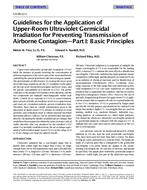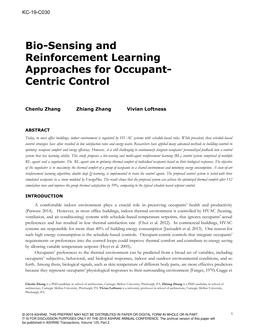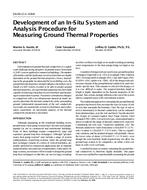Flow and temperature distributions in an atrium with a tall ceiling height (H = 130m) are analysed by means of computational fluid dynamics (CFD) and radiation simulation. The occupied region (the space near the floor) of the atrium, which is open to a large void space, is partially air conditioned. The effects of the flow and temperature fields of the void space on the occupied region are analysed in detail. Then the effects of ventilation in the upper space of the atrium on the temperature distribution are examined. The analysed void space, 130m high, is sandwiched between two high-rise office buildings. The west and east sides are covered with glass walls, through which much solar heat is introduced into the void space. In summer, only the lowest portion of the atrium is well air conditioned, and the rest of the space, especially the upper part, is heated by the sunshine and becomes hot. The atrium has open bridges at every floor to connect the two office buildings, so the flow and temperature around these bridges are greatly affected by the atrium air. The analysis includes solar radiation (shortwave) simulation, radiative heat transfer (infrared) simulation, heat conduction simulation, and air flow and temperature distribution analysis of the atrium space (CFD analysis). Ventilating the upper space effectively limits the temperature rise in the upper part of the atrium to within an acceptable level. The radiation and convection simulations clearly show the characteristics of the flow and temperature fields of the large-scale atrium.
KEYWORDS: year 1995, calculating, atria, temperature, temperature distribution, voids, ventilation, offices, buildings, glazing, solar heat gain, solar radiation, infrared radiation, heat flow, properties, algorithms
Citation: Symposium, ASHRAE Trans. 1995, Vol.101, Part 2
Product Details
- Published:
- 1995
- File Size:
- 1 file , 1.4 MB
- Product Code(s):
- D-17252


